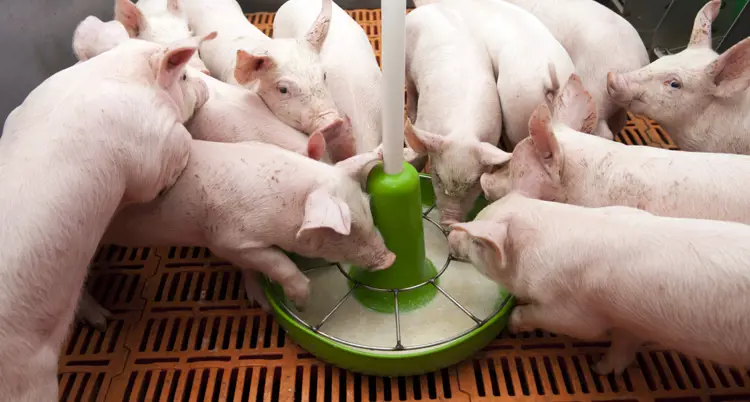
The function of the intestines is digestion and absorption of nutrients and they form a barrier against pathogens. Intestinal villi, finger like structures on the intestines, are important for the digestion and absorption of nutrients. The feed intake of piglets after weaning is much lower then the intake during lactation. This has major consequences for the intestinal villi. Due to the lower feed intake during the first few days after weaning, fewer nutrients enter the intestines. This causes the intestinal villi to significantly decrease in size. A good feed intake post-weaning can prevent this. Research shows that the intestinal villi barely decrease in size when there is a high intake of (creep) feed during the first three days after weaning, while they significantly shrink in size when there is a low intake of (creep) feed in weaned piglets.
Due to the atrophy of the intestinal villi there are fewer intestinal cells to absorb nutrients. A reduced absorption of nutrients results in larger quantities of undigested nutrients in the colon. Here they can be used as a nutrient source by pathogenic bacteria, increasing the risk for health problems during this period. Pathogenic bacteria profit most from these nutrients thus creating a risk of significantly increased health problems throughout the entire growing period. Other research indicates that low feed intake during the first days after weaning causes increased intestinal leakage. This is because more openings are created between the intestinal cells during the first few days after weaning. As a result an undesired number of pathogens reach the bloodstream. Aside from low feed intake during the first days after weaning, intestinal leakage can also occur due to stress and infections.
Variation in Feed Intake after Weaning
In practice, not all piglets in a litter eat the same quantity of feed. In an average litter, 10 to 20 percent barely eats during the first two to three days after weaning. These are the piglets that incur a lot of intestinal damage and are at a high risk of incurring intestinal health problems at a later stage of the growing period. It is extremely important that all piglets take in feed in the first days after weaning.
Optimal Feed Strategy after Weaning
When piglets are weaned, between three to four weeks, they will have eaten only a small amount of feed, when feed intake in lactation was not stimulated. As a result, at the time of weaning, the piglets are still not sufficiently accustomed to taking in dry feed and will experience a large dip in feed intake after weaning. To maintain optimal intestinal health, these piglets should be provided with a very highly digestible energy-rich prestarter, focused on energy intake, during the first three days after weaning. After a maximum of three days after weaning they should then be switched to standard weaning feed. The composition of this weaning feed ensures that any potentially incurred intestinal damage is repaired as quickly as possible and that there is a gradual transition to next feeding phase.
A dry feed, such as De Heus’ Premium prestarter optimally stimulates feed intake by all piglets. This very highly digestible energy-rich feed provides for a clearly higher energy intake by all piglets, and consequently for maintaining healthier intestines, and healthy and vital piglets.
If you want to learn more about this topic, please contact your local De Heus' specialist






